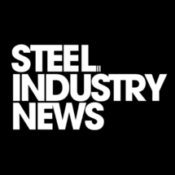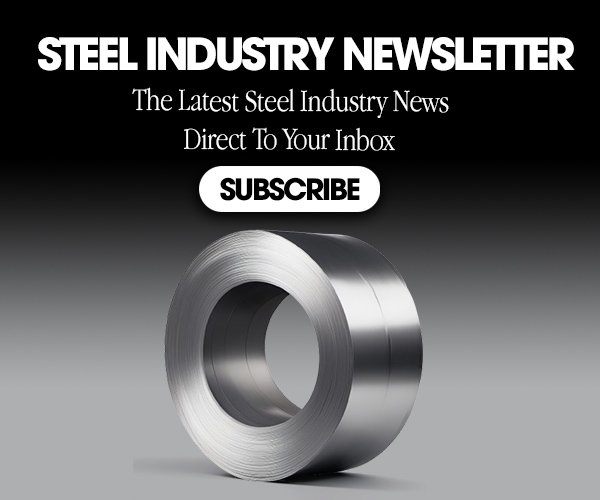The global steel landscape underwent dramatic transformation in 2025, marked by the unprecedented escalation of U.S. steel tariffs from 25% to 50% in June, fundamentally reshaping competitive dynamics between world steel prices and domestic U.S. market pricing. This comprehensive analysis examines the profound impact of trade policy on steel markets, revealing how tariff protection has created substantial pricing premiums for U.S. steel while global oversupply continues to pressure international markets.
Current Price Benchmarks: Stark Global Disparities Emerge
As of August 2025, the divergence between U.S. domestic steel prices and global benchmarks has reached historic proportions. U.S. hot-rolled coil steel averages $850-900 per ton, while Chinese steel trades at just $410 per ton, creating a staggering 107% price premium for American steel. European steel prices settle in the middle at $635 per ton, still 34% below U.S. levels, while world export prices average $466 per ton.

US Domestic Steel Price Evolution: January 2025 – August 2025
This pricing disparity represents a fundamental shift from historical norms, where U.S. steel typically commanded modest premiums of 10-20% over international prices. The current spread reflects not just tariff protection but also the underlying strength of domestic demand and constrained supply conditions that have emerged following trade policy changes.
Major U.S. steelmakers have responded differently to market conditions. Cleveland-Cliffs maintains premium pricing at $950 per ton for hot-rolled coil, while Nucor’s Consumer Spot Price has moderated to $875 per ton as of August 2025. This pricing divergence among domestic producers reflects different strategic approaches, with Cleveland-Cliffs leveraging its integrated operations and automotive focus to command higher prices, while Nucor’s electric arc furnace flexibility allows for more responsive pricing.

Global Steel Price Comparison by Region – August 2025
The price volatility throughout 2025 demonstrates the market’s adjustment to new trade realities. From January lows around $755 per ton, U.S. steel prices surged to peaks of $935 per ton in March following the initial 25% tariff implementation, before stabilizing in the $900-950 range after the June tariff escalation to 50%.
Tariff Structure & Policy Context: The 50% Reality
The escalation of Section 232 steel tariffs to 50% on June 4, 2025, marked the most aggressive U.S. trade protection measure in decades. This doubling from the previous 25% rate affects virtually all steel imports, with only the United Kingdom maintaining a 25% rate pending completion of bilateral trade negotiations.
The tariff structure now encompasses not only primary steel products but also derivative steel products classified under Harmonized Tariff Schedule of the United States (HTSUS Chapters 73 and 76). Critically, the new system calculates tariffs based solely on the steel content value of derivative products, while subjecting non-steel content to other applicable tariffs, including reciprocal IEEPA duties.
Key tariff provisions include:
- 50% ad valorem on all steel imports (except UK at 25%)
- Application to both primary steel and derivative products
- Stacking modifications prioritizing Section 232 tariffs over IEEPA fentanyl-related tariffs for Canadian and Mexican imports
- Foreign Trade Zone requirement for privileged foreign status entry
- Elimination of all previous country exemptions and product exclusion processes
The policy framework underlying these measures cites national security concerns and the need to counter foreign countries that “offload low-priced, excess steel” in U.S. markets. However, economic analysis suggests the tariffs function primarily as industrial protection, with U.S. military steel consumption representing only 3% of total domestic production.
Cost Comparison: Import vs. Domestic Steel Economics
The 50% tariff regime fundamentally altered the economics of steel procurement in the United States. Boston Consulting Group (BCG) estimates the tariff increase will add $50 billion in additional costs, effectively doubling the impact of the previous 25% tariffs. For importers, a typical $400 per ton international steel price now carries a $200 tariff penalty, creating a total landed cost of $600 per ton.
Despite this substantial tariff burden, U.S. domestic steel at $850 per ton still commands a $250 premium over tariff-inclusive import prices. This persistent gap reflects several factors:
Supply Chain Disruptions: U.S. steel imports declined 9.6% month-over-month through June 2025, with some product categories falling to their lowest levels since 2020. This import compression has tightened domestic supply, supporting premium pricing.
Quality and Service Premiums: Domestic producers offer shorter lead times (4.3 weeks average) compared to international suppliers, plus reduced supply chain risk and currency exposure.
Market Segmentation: Specialized steel grades and automotive applications continue requiring domestic production due to quality specifications and just-in-time delivery requirements.
Regional Logistics: Transportation costs and inventory carrying expenses favor domestic suppliers, particularly for West Coast markets where delivery from overseas mills can add 8-9 weeks to lead times.
The tariff impact varies significantly across steel product categories. Semi-finished steel exports from China quadrupled to 4.71 million tons in the first five months of 2025, as producers shift toward products facing lower tariff barriers. This trade diversion illustrates how protective measures create market distortions and alternative supply channels.
Competitive Landscape and Strategic Response
U.S. steelmakers have responded to tariff protection through significant capacity utilization improvements and strategic investments. Domestic capacity utilization surged from 71.7% in Q4 2024 to 79.5% by August 2025, representing the highest levels in three years. Weekly steel production reached 1.8 million net tons, up 4.5% year-over-year.
Cleveland-Cliffs leveraged tariff protection to implement substantial price increases, raising hot-rolled coil pricing from $760 per ton in January to $950 per ton by July 2025. The company’s strategy focuses on premium automotive applications where quality and delivery reliability justify higher prices.
Nucor Corporation adopted a more flexible approach, adjusting prices more responsively to market conditions. After reaching peaks of $935 per ton in March, Nucor has moderated pricing to $875 per ton by August, reflecting the company’s electric arc furnace advantages and ability to respond quickly to scrap price fluctuations.
Foreign producer responses have varied significantly:
- European steelmakers face potential displacement from U.S. markets for commodity grades like hot-rolled coil, while maintaining opportunities in specialty products such as tinplate and tool steel
- Asian producers increasingly redirect exports toward Middle Eastern and Southeast Asian markets as U.S. access becomes economically unfeasible
- Investment diversions toward U.S. production capacity, including Emirates Global Aluminum’s planned facility and Korean firms Hyundai Steel and Posco’s Louisiana joint venture
The competitive landscape has become increasingly bifurcated between protected domestic markets and intensely competitive global export markets. China’s steel exports reached record levels of 110.7 million tons in 2024, with first-half 2025 exports growing 9.2% year-over-year despite widespread trade restrictions.
Supply Chain and Economic Impact Assessment
The 50% tariff regime has created cascading effects throughout U.S. industrial supply chains. Daimler Truck North America estimates that previous 25% tariffs added $3,500 to the cost of a $100,000 school bus; the doubled tariffs are expected to create proportionally larger impacts.
Key sectors experiencing cost pressures include:
- Construction industry: Steel price increases have caused 6-8% budget overruns on infrastructure projects, with some developments delayed pending cost stabilization
- Automotive manufacturing: Despite strong domestic demand, automakers face margin compression as steel costs rise faster than vehicle pricing power
- Machinery and equipment: Capital goods producers struggle to pass through steel cost increases in competitive global markets
Service center and distributor impacts have been particularly pronounced. Inventory carrying costs have increased substantially, while pricing volatility complicates forward contracting. Many distributors have reduced steel inventory levels, preferring just-in-time procurement despite longer lead times.
The regional economic effects vary significantly across the United States:
- Great Lakes region steelmaking communities have benefited from increased production and employment opportunities
- West Coast manufacturers face higher steel costs due to transportation premiums from domestic mills
- Southern states with automotive manufacturing concentrations experience mixed impacts from higher input costs offset by increased regional steel production
Global Context: Overcapacity and Trade Distortions
The U.S. tariff measures must be understood within the broader context of global steel overcapacity, which the Organization for Economic Co-operation and Development (OECD) projects will reach 721 million tons by 2027, exceeding the combined production of all OECD countries. This structural imbalance stems primarily from Chinese subsidization levels that are 10 times higher than OECD countries as a percentage of firm revenues.
China’s steel industry dynamics continue driving global market distortions:
- Steel production capacity exceeding 1.2 billion tons annually, far beyond domestic consumption requirements
- Export volumes maintaining record levels despite widespread trade restrictions
- Semi-finished product exports surging 4.1 times in early 2025 as producers circumvent finished product tariffs
The global trade response to Chinese overcapacity has intensified dramatically. Nineteen governments launched 81 anti-dumping investigations against steel products in the past year, representing a fivefold increase and approaching levels seen during the 2016 steel crisis.
European steel markets face particular challenges, with EU apparent steel consumption projected to decline 0.9% in 2025 due to tariff-related uncertainty and manufacturing weakness. The European steel association EUROFER has called for strengthened post-safeguard measures to address spillover effects from U.S. trade actions.
Future Market Trajectory and Strategic Implications
The sustainability of current U.S. steel price premiums depends critically on demand resilience and domestic capacity responses.
Key factors influencing future pricing include:
- Automotive sector demand, which fell 12% in March 2025 but remains a critical driver of premium steel consumption
- Construction activity trends, where infrastructure spending supports steel demand but residential construction faces headwinds
- Manufacturing PMI conditions, which contracted to 49 in March 2025, indicating broader industrial weakness
- Scrap steel price volatility, particularly affecting electric arc furnace producers like Nucor
Domestic capacity expansion is accelerating in response to tariff protection. New mill capacity additions are ramping up production, potentially adding supply pressure if demand fails to keep pace. The entry of new capacity could test pricing power if market conditions weaken.
International market developments continue evolving rapidly:
- Trade diversion effects as Chinese exports redirect toward Southeast Asia and Middle East markets
- Technology investments in low-carbon steelmaking potentially altering competitive dynamics
- Regional trade agreement negotiations that could modify tariff structures for specific countries
The steel industry stands at a critical juncture where protective trade policies have successfully supported domestic pricing and capacity utilization, but underlying demand fundamentals and global overcapacity pressures remain challenging. The ultimate test will be whether tariff-protected pricing levels can be sustained if industrial demand weakens.
Strategic recommendations for market participants:
- Steel buyers should develop flexible sourcing strategies balancing cost, quality, and supply security considerations
- Domestic producers must invest in productivity improvements and product differentiation to justify premium pricing
- Import-dependent manufacturers need supply chain diversification and cost management strategies
- Policy makers should monitor economic impacts and competitive effects as market conditions evolve
The transformation of U.S. steel markets through aggressive trade protection represents a fundamental shift toward industrial policy prioritizing domestic production over global efficiency. While this approach has succeeded in supporting U.S. steel industry profitability and employment, the long-term economic consequences will depend on broader industrial policy coherence and demand sustainability in an increasingly fragmented global trading environment.
SOURCES
Industrial Tube and Steel Corporation – The State of Steel May 2025
https://www.industrialtube.com/state-of-steel-may-2025
FocusEconomics – Steel USA Price Charts and Forecasts
https://www.focus-economics.com/commodities/steel
OECD Steel Outlook 2025
https://www.oecd.org/industry/ind/steeloutlook2025.htm
Steel on the Net – Steel Market Forecast 2025-2026
https://www.steelonthenet.com/market-outlook.html
J.P. Morgan – Outlook for Aluminum, Steel & Copper Prices
https://www.jpmorgan.com/insights/research/metals-outlook
Fastmarkets – Crude Steel Production Forecast 2025
https://www.fastmarkets.com/insights/crude-steel-production-forecast-2025
Trading Economics – Steel Price Data
https://tradingeconomics.com/commodity/steel
Gordian RSMeans – Steel Price Updates
https://www.rsmeans.com/resources/news/steel-price-updates
SteelBenchmarker – Price History Report July 2025
https://steelbenchmarker.com/history/
AG Metal Miner – Steel Pricing and Tariff Analysis
https://agmetalminer.com/steel-pricing-tariff-analysis-2025
EUROFER – European Steel Market Outlook 2025
https://www.eurofer.eu/publications/market-reports/economic-outlook-2025
Sadr Steels – Global Steel Prices August 2025
https://www.sadrsteels.com/global-steel-prices-august-2025
Investing.com – US Steel Futures Historical Data
https://www.investing.com/commodities/us-steel-futures-historical-data
Precedence Research – Steel Market Size Analysis
https://www.precedenceresearch.com/steel-market
White Case – Trump Administration Steel Tariffs Analysis
https://www.whitecase.com/insight-alert/trump-admin-steel-tariffs-analysis
Covington & Burling – Section 232 Actions Status
https://www.cov.com/en/news-and-insights/insights/2025/06/section-232-steel-actions-update
CNN – Steel Aluminum Tariffs Doubled Analysis
https://www.cnn.com/2025/06/04/business/us-steel-tariffs-double
White House – Steel Aluminum Tariff Fact Sheet
https://www.whitehouse.gov/briefing-room/statements-releases/2025/06/04/steel-aluminum-tariff-fact-sheet
Bureau of Industry and Security – 232 Steel Information
https://www.bis.doc.gov/232-steel
Budget Lab Yale – State of US Tariffs August 2025
https://budgetlab.yale.edu/state-of-us-tariffs-august-2025
Boston Consulting Group – 50% Tariffs Impact Study
https://www.bcg.com/publications/2025/june-2025-update-impact-us-tariffs-50-percent-on-steel-aluminum
GMK Center – China Steel Exports Analysis
https://gmk.center/en/news/china-steel-exports-analysis-2025
American Iron and Steel Institute – Industry Data
https://www.steel.org/industry-data/
Steel Market Update – Mill Pricing and Lead Times
https://www.steelmarketupdate.com/pricing-and-lead-times
Cleveland-Cliffs – Pricing Announcements
https://www.clevelandcliffs.com/news/pricing-updates
Nucor Corporation – Consumer Spot Pricing
https://nucor.com/news/consumer-spot-pricing
Phoenix Steel Service – Base Price Tracking
https://phoenixsteelservice.com/steel-base-price-tracking
International Trade Insights – Tariff Requirements Summary
https://www.internationaltradeinsights.com/tariff-requirements-summary
Check out our most recent articles below:
- Nucor Increases Steel Prices Again
- Steel Industry and Manufacturing Demand: Understanding the Critical Decline in HVAC and Agricultural Equipment Sectors in 2025
- Steel Prices in November 2025: Market Dynamics, Price Drivers, and Industry Outlook
- The Dodge Momentum Index October 2025: Understanding Commercial Planning Momentum and Its Impact on Construction Spending
- Nucor Announces 3rd Weekly Price Increase: What’s Driving the Market and What It Means for Key Segments
📬 Enjoying this article? Do not miss the next one.
SUBSCRIBE below to the Steel Industry News email newsletter to get the latest updates delivered straight to your inbox. Includes a comprehensive reporting of all key topics impacting the steel industry. 🌍The Most Recent Steel News Reports — in one easy-to-read weekly format
🔐 Annual Plan: Just $300/year – that’s 6 months free .











